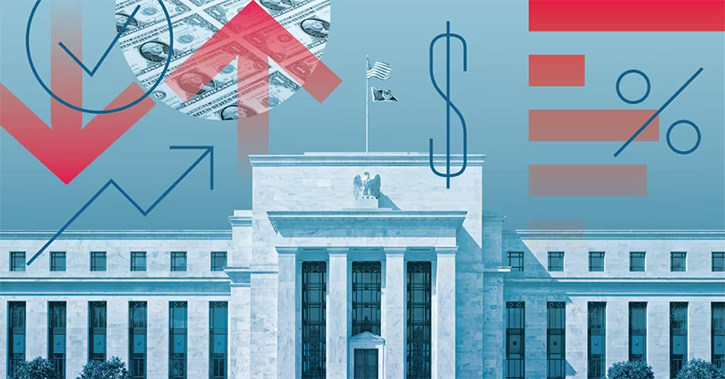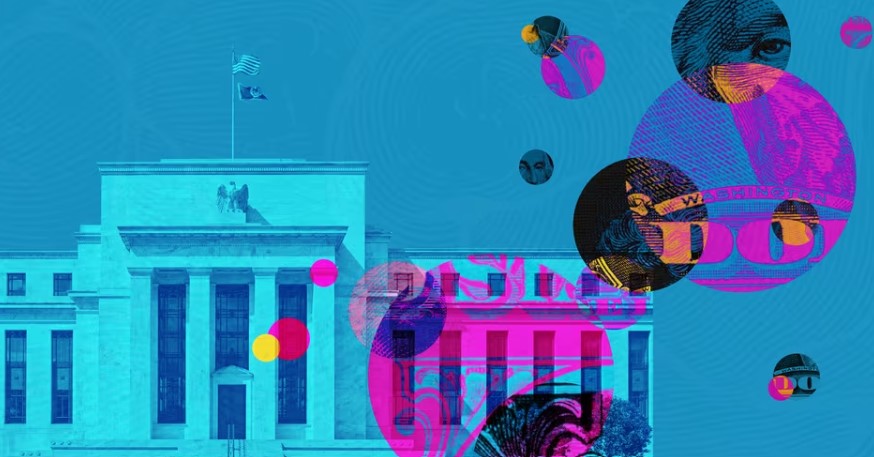Jeremy Glaser: For Morningstar, I'm Jeremy Glaser. As expected, the Fed raised its benchmark rate by 25 basis points today, and we're here with Bob Johnson, our director of economic analysis, to see if we learned anything new from this release.
Bob, thanks for joining me.
Bob Johnson: Great to be here today.
Glaser: The Fed really almost went out of its way to get the market ready for this increase today. There really was no big surprise, at least on that front.
Johnson: Absolutely not. They had sent out a bunch of people, Fed governors, to go out and make speeches, and they've all indicated, "Gee, I thought rates would probably move higher," and we went from three weeks ago with a zero probability of a rate hike to almost 100% three weeks later. Lo and behold, we got the number.
Glaser: Beyond the rate hike, we are also looking at what they say in the statement of so-called dot plot, or economic projections.
Johnson: It's really business as usual. The economic forecast, which we always take a close look at, was unchanged, as was the unemployment rate, as was their inflation assumption, so there was no change from their December meeting. They're thinking relatively low GDP growth of about 1.9%, about 2% inflation, both core and headline equaling each other here in the very near future. It was a very boring, steady state. No recession in sight, no growth spurt in sight-type of
Glaser: They don't see anything fundamentally changing in the economy, they just think it's time for rates to move higher?
Johnson: I think that what they expressed that they wanted to give themselves some wiggle room. If some external shock hit the economy, that they've got some room to adjust, which, when you have rates terribly low, you really don't have much room to operate in, and that's part of what's going on. I certainly think that part of the inflation data, you want to be a little cautious. We can talk about the inflation data, but it has moved up, and it certainly had some impact on the consumer already.
Glaser: We're going to look at that dot plot a little bit more closely. It shows where governors think rates will be, both the
Johnson: You know what? I think it either will have some type of
Glaser: What's next for the Fed, then? What do you think they'll be looking at closely? Is it, does the labour market hold up? Is it inflation? Is it a combination of things? What will predict if they actually are able to continue on this steady move?
Johnson: They really stress that they're still very data-dependent. Everybody tried to focus them on the dot plot and the nice stair-step and the move up, two more rate moves this year, but really it's all dependent on the data. They continued to stress that, well, if the economy's slowed, or if it's not as strong or as weak as people think, then we'll have to act differently, that this is not cast in stone, this is just kind of our
Glaser: Overall, do you think the Fed is making the right moves here? Does their take on the economy agree with yours, Bob?
Johnson: I think that they made the right move right now. I think they had to give themselves some more wiggle room, in case we did hit unexpected turbulence, and they needed to stimulate the economy. They really didn't have much room to do that from where they are right now, so that gave them that extra room, and that's why I think they needed to do it. I think they also--inflation was starting to look a little higher, so I think they wanted to make sure that things didn't get out of hand there a little bit, so I think it was great from that standpoint. The market had already kind of priced at end of their expectation, so why not do it? Certainly, if something turned into a problem, they could always roll it back at another meeting. I think that it was the right move.
Longer term, I think that perhaps they're a little bit too optimistic on the economy. I think that certainly the data we've seen recently looks a little weak with the consumer, which is 70% of the economy being affected by higher inflation. Not that much higher inflation, but higher inflation. At the same time, wage growth is about the same as it's been for the last two
Glaser: Bob, thanks for your analysis today.
Johnson: Thank you.
Glaser: For Morningstar, I'm Jeremy Glaser. Thanks for watching.





















